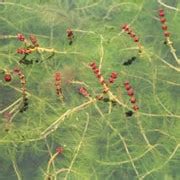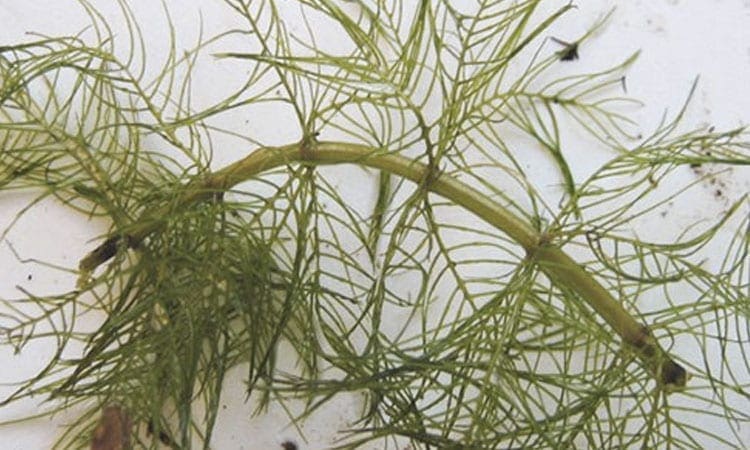Control of invasive aquatic plants like Eurasian watermilfoil (Myriophyllum spicatum) is a pressing concern for many freshwater ecosystems around the world. Eurasian watermilfoil, commonly referred to as milfoil, is a highly invasive species that can outcompete native vegetation, reduce biodiversity, and impair water quality. It also poses significant challenges for recreational activities such as boating and swimming. Managing milfoil infestations requires a multi-faceted approach that includes prevention, early detection, and a combination of physical, biological, and chemical control methods. Here, we explore five ways to control milfoil, emphasizing the importance of integrated management strategies tailored to the specific needs and constraints of each affected ecosystem.
Key Points
- Prevention is the most effective method of controlling milfoil infestations.
- Physical control methods, such as hand-pulling and mechanical harvesting, can be effective for small infestations.
- Biological control methods, including the use of weevils, offer a promising approach for managing milfoil populations.
- Chemical control, using herbicides, is a rapid method for reducing milfoil biomass but requires careful consideration of environmental impacts.
- An integrated management plan combining multiple control methods and considering long-term ecosystem health is crucial for sustainable milfoil control.
Understanding Milfoil and Its Impacts

Eurasian watermilfoil is a submerged aquatic plant that can form dense stands, shading out native plants and altering the habitat for other aquatic organisms. It is highly adaptable and can grow in a variety of water conditions, making it a formidable invasive species. The impacts of milfoil infestations are far-reaching, affecting not only the ecological balance of water bodies but also the economic and recreational activities that depend on these ecosystems.
Physical Control Methods
Physical control methods involve the direct removal of milfoil plants from the water. Hand-pulling and mechanical harvesting are two common techniques used. Hand-pulling is effective for small, newly established infestations and can be done by volunteers or professional divers. Mechanical harvesting involves using specialized equipment to cut and remove milfoil plants. While these methods can provide immediate relief, they can also be labor-intensive and may not completely eradicate the milfoil, as fragments of the plant can regrow into new plants.
| Physical Control Method | Efficacy | Environmental Impact |
|---|---|---|
| Hand-pulling | High for small infestations | Low |
| Mechanical harvesting | Variable, dependent on equipment and operator skill | Moderate, potential for habitat disruption |

Biological Control Methods

Biological control involves using living organisms to control milfoil populations. One of the most promising biological control agents for milfoil is the milfoil weevil (Euhrychiopsis lecontei). These weevils feed exclusively on Eurasian watermilfoil and can significantly reduce plant biomass. Biological control offers a targeted and potentially sustainable method for managing milfoil, with minimal environmental impacts compared to chemical control methods.
Chemical Control Methods
Chemical control, using herbicides, is a rapid and effective method for reducing milfoil biomass. However, it requires careful consideration of environmental impacts, as herbicides can affect non-target species and contaminate water bodies. The use of herbicides should be part of a broader management strategy and applied by professionals to minimize risks to the ecosystem.
Integrated Management Strategies
An integrated management approach, combining physical, biological, and chemical control methods, is often the most effective way to manage milfoil infestations. This approach allows for a tailored strategy that addresses the specific conditions and needs of each ecosystem. It also recognizes the importance of ongoing monitoring and adaptation, as the effectiveness of control methods can vary over time due to changes in the ecosystem or the development of resistance in the milfoil population.
What is the most effective method for controlling small milfoil infestations?
+For small, newly established milfoil infestations, hand-pulling is often the most effective and environmentally friendly method. It allows for the targeted removal of milfoil plants with minimal disruption to the surrounding ecosystem.
Can biological control methods completely eradicate milfoil?
+While biological control methods, such as the use of milfoil weevils, can significantly reduce milfoil populations, complete eradication is challenging. Biological control is often used as part of an integrated management strategy to manage milfoil at acceptable levels.
What considerations should be taken into account when using chemical control methods for milfoil management?
+When considering chemical control methods, it's crucial to assess the potential impacts on non-target species, the risk of contaminating water bodies, and the development of resistance in the milfoil population. Chemical control should be used judiciously and as part of a broader integrated management plan.
In conclusion, controlling milfoil requires a thoughtful and multi-faceted approach that considers the ecological, economic, and recreational impacts of infestations. By understanding the strengths and limitations of different control methods and adopting an integrated management strategy, it’s possible to effectively manage milfoil populations and protect the health and resilience of freshwater ecosystems.



